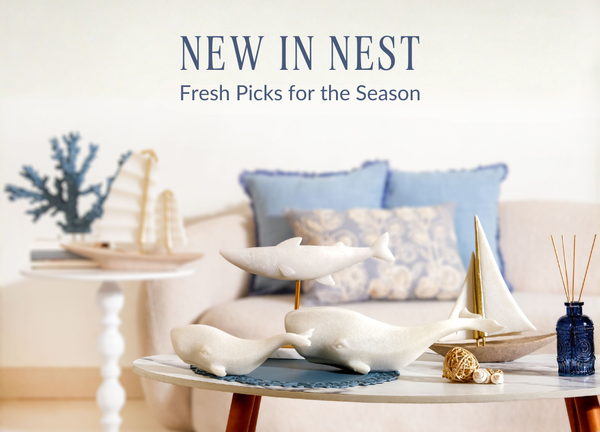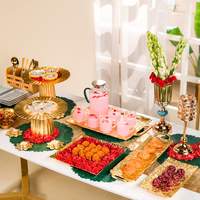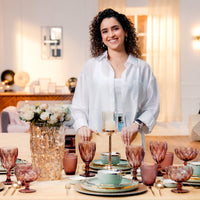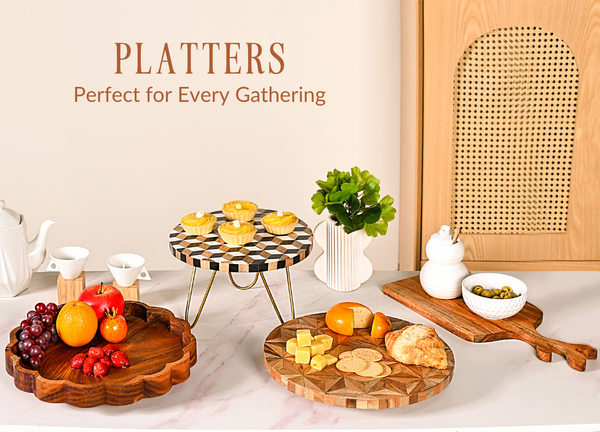Ever thought of the reason behind the nursery rhyme “Bits of Paper Lying on the Ground”? It may appear trivial at first, yet it was thoughtfully composed by an adult.
But why would someone write a rhyme about household chores for children? Well, there’s science behind it!
As it turns out, our brains crave order more than we realise. From childhood, we’re subtly trained to value cleanliness and organisation, not just for hygiene, but for the calm it brings to our inner world.
Fast forward to adulthood, and that same sense of peace comes flooding in when we clear a cluttered coffee table or finally sort that overflowing drawer.
According to Sara Lindberg (M.Ed., a writer focusing on mental health, fitness, nutrition, and parenting) in Very Well Mind, “Our surroundings shape a lot more than our daily routines. They influence everything from how we think to how we feel and function. Consider how noise from the street might make it hard to concentrate on your work or how the lighting in your office can make it hard to focus. The environment and mental health are intrinsically connected.”
On that note, let’s unpack why our brain loves a tidy corner, and how styling our living spaces is one of the easiest ways to de-stress.
Clutter = Brain Chaos
When our surroundings are visually cluttered, our brains struggle to filter through the excess stimuli. This overstimulation leads to reduced focus and cognitive overload, which basically means that our mental resources get used up just trying to ignore the mess.
“Clutter competes for your attention, resulting in decreased performance and increased stress,” says Dr. Sherrie Bourg Carter, psychologist and author of High-Octane Women: How Superachievers Can Avoid Burnout.
Studies have shown that messy environments can increase cortisol, the stress hormone, making us feel anxious, irritable, and mentally drained. In contrast, organised spaces help the brain relax. When everything is in its place, our mind does not need to work overtime processing distractions.
Clean, minimal surroundings allow your brain to focus on what it does best - solving problems, sparking creativity, and making clear decisions, without the interference of visual clutter. In other words, tidying up isn’t merely about aesthetics; it’s neuroscience at work.
Tiny Tasks, Big Rewards
Each time we complete a small organising task, such as tidying up a study desk, folding laundry, or arranging items on a pantry shelf, our brain's reward system is activated, releasing dopamine, a neurotransmitter associated with pleasure and motivation. This release creates feelings of satisfaction, accomplishment, and even joy. It's the brain’s natural way of reinforcing the behaviour, encouraging us to repeat it.
This is why those quick clean-ups or mini makeovers feel strangely therapeutic. It’s not simply about creating order in our spaces but reinforcing a sense of control, which is especially powerful during times of stress or uncertainty.
Moreover, when organisation is combined with aesthetic elements, such as colour palettes and texture, the dopamine response in our brain can become even more pronounced.
For instance, while organising a kitchen, using visually soothing and functional storage solutions like our Beige Tall Kitchen Storage Canister Set can significantly enhance the experience. Its uniform design, neutral tones, and sleek silhouette not only streamline pantry storage but also create a sense of visual calm, making the task both efficient and emotionally satisfying.
Our brains are wired to appreciate beauty and structure. So when a space is both tidy and visually appealing, it creates a double win: less stress and more happiness. It’s not vanity; it’s biology.
In short, that tiny act of straightening a stack of books or fluffing a cushion? It’s doing more for your mental well-being than you might think.
Clean is Good, Beautiful is Better
While a clutter-free environment allows the brain to relax, it is intentional styling that truly uplifts mood and fosters emotional ease. A decluttered room may reduce stress, but a thoughtfully styled space has the power to spark genuine joy.
Psychology shows that humans are instinctively drawn to visual harmony: symmetry, balanced layouts, and cohesive colour schemes. Soft textures, warm lighting, earthy tones, and natural materials like wood or linen bring a sense of grounding and comfort.
Even adding an elegant piece like the Multilayer Decorative Rotating Glass Bowls Set to the table or shelf can be a small, dopamine-boosting ritual. Each time you rotate the tier to store or display something, your brain registers the reward of both beauty and function.
When someone styles their space with decor that reflects their personality and evokes calm, it becomes more than decoration, it turns into a sensory sanctuary. Visual harmony offers subconscious reassurance, creating micro‑moments of calm each time the eye lands on a carefully arranged corner.
In essence, styling is not just decorative, it’s self‑care. Whether it’s a beautiful table linen, a sculptural decor piece, or a plush cotton cushion, these visual cues speak directly to the subconscious, transforming a tidy environment into one that truly heals, inspires, and uplifts.
Your Space is a Mirror of Your Mind
When surroundings feel calm, the inner world tends to follow. A calm mind's mood is always content, and one can often feel how a person keeps their spaces.
In fact, research consistently shows that individuals experience reduced anxiety, improved mood, and even better sleep in clutter-free environments.
During times of stress or uncertainty, this physical order becomes an anchor, subtly reminding the brain that one is safe, stable, and grounded.
Having a dedicated reading corner with big rugs, planters, and cushions can especially reflect and nurture a person’s mental space, providing a sanctuary for calm and reflection.
And it’s not just about feelings. There is a practical payoff too. When an environment is free of visual chaos, the brain does not have to waste energy filtering distractions. The result is sharper focus, clearer thinking, and better decision-making.
Whether working from home or winding down at the end of the day, the space becomes a quiet collaborator in helping individuals function at their best.
In essence, a space reflects the state of mind and also shapes it. By consciously tending to the environment, one is not just cleaning a room; they are creating the mental clarity and emotional resilience needed to take on whatever life throws their way.
Your Space, Your Therapy
An impactful illustration of the connection between environment and mental health is provided by a case featured by Home Organisers Australia.
Sandra, a 42-year-old woman coping with anxiety and PTSD, faced significant challenges due to an overwhelming home environment with unattended laundry, cluttered surfaces, and a lack of regular upkeep. This disorder contributed to her emotional distress, leading her to avoid certain rooms altogether.
With the guidance of a trauma-informed home-organisation team, Sandra’s living space was gently transformed. Her bedroom and kitchen were thoughtfully decluttered.
Calming. colour palettes and soft lighting were introduced, and intuitive systems, such as labelled baskets and clearly defined zones, were put in place.
Within just a month, she reported fewer anxiety attacks, better sleep, and greater mental clarity. The renewed sense of control even gave her the confidence to return to part-time studies.
“My home felt like part of my recovery. The team didn’t just clean, they helped me breathe again.” — Sandra (Source: “The Home Is the Heart of Recovery: Why Clean, Organised Spaces Matter for Mental Health.” Home)
This case demonstrates that intentional organisation and decoration go beyond appearances; they can serve as powerful catalysts for emotional healing and mental well-being.
On that note, it is important that we should have dopamine corners at our homes!
Style Meets Science: A Mini Sanctuary at Home
What are dopamine corners anyway? Well, these are intentional spaces designed to spark joy, calm the senses, and offer a quiet sense of retreat from the noise of daily life.
This is your go-to nook for comfort, calm, and clarity. First, declutter with intention. Don’t just move things around, remove anything that doesn’t serve a purpose or bring joy. Then, focus on calming colours like soft pastels, warm neutrals, or earthy tones that signal peace to your brain.
Layer in natural textures, like wooden serving trays, woven baskets for storage, or a jute rug for a tactile grounding element. These materials offer sensory comfort and subtly tell your nervous system: you’re safe here.
Finally, add joy-triggers that speak to you, like a stack of your favourite books, scented candles, a big indoor planter, or a photo frame that holds a happy memory.
The beauty of a dopamine corner is that it doesn’t require a full room makeover. Small, intentional changes can make a big emotional impact. This is styling with purpose, where aesthetics meet psychology, and your home becomes a partner in your well-being.
Because sometimes, all it takes is one corner to reset your mind.
At the end of the day, a clean and styled space isn’t just something that’s nice to have; it’s brain therapy in its simplest form. It helps lower stress, boosts mood, and gently reminds you that you’re in control, even when life feels anything but.
Ready to create your own dopamine-boosting nook? Explore our curated collection of home styling pieces designed to bring balance, beauty, and calm into your everyday life.
To gain more insights on the relation between decluttered spaces and mental well-being, check out our blogs: Declutter for Better Mental Health: The Link Between Living Spaces & Mental Peace and Wellness Starts At Home: Little Things That Make A Big Difference



























